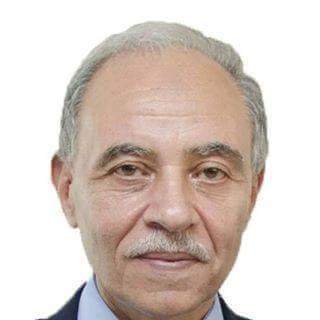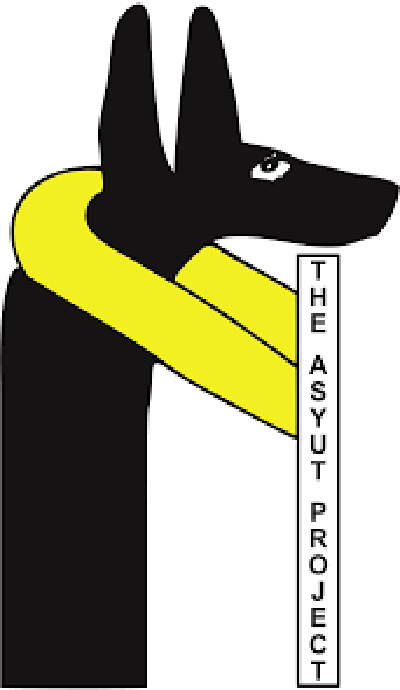The Asyut Project: Tenth Season of Fieldwork (2012)
Jochem Kahl, Mahmoud El-Khadragy, Ursula Verhoeven, Mohamed Abdelrahiem
From 28 August to 18 October 2012, the Egyptian-German joint mission of Sohag University, Freie Universität Berlin and Johannes Gutenberg-Universität Mainz conducted its tenth season of fieldwork in the ancient necropolis of Asyut situated in the western mountains (Gebel Asyut al-gharbi).
Members of the joint mission were:
(1) Prof. Dr. Mahmoud El-Khadragy, University of Sohag, Egyptologist, field director
(2) Prof. Dr. Jochem Kahl, Free University Berlin, Egyptologist, project director and field director
(3) Prof. Dr. Ursula Verhoeven, University of Mainz, Egyptologist, project director
(4) Prof. Dr. Mohamed Abdelrahiem, University of Sohag, field director
(5) Dr. Abd el-Naser Yasin, University of Sohag, studies of Islamic finds
(6) Dr. Sameh Shafik, University of Sohag, epigrapher
(7) Dr. Hesham Faheed Ahmed, University of Sohag, Egyptologist, assistance to field director
(8) Dr. Michael van Elsbergen, University of Mainz, Egyptologist, documentation of objects
(9) Dr. Teodozja Rzeuska, University of Warsaw, Egyptologist, documentation of objects
(10) Dr. Ulrike Fauerbach, German Institute of Archaeology, surveyor, documentation of architecture and mapping of Gebel Asyut al-gharbi
(11) Andrea Kilian, M.A., University of Mainz, Egyptologist, documentation of objects
(12) Monika Zöller-Engelhardt, M.A., University of Mainz, Egyptologist, assistance to field director
(13) Dr. Svenja Gülden, University of Mainz, Egyptologist, epigrapher
(14) Josephine Malur, MA, Free University of Berlin, Egyptologist, documentation of objects
(15) Anne Herzberg, BA, Free University of Berlin, epigraphy, documentation of objects
(16) Ann-Cathrin Gabel, Free University of Berlin, student of Egyptology, documentation of objects
(17) Tina Beck, Free University of Berlin, student of Egyptology, documentation of objects
(18) Fritz Barthel, photographer, documentation of objects
(19) Eva Gervers, University of Mainz, student of Egyptology, documentation of objects, epigraphic work
(20) Cornelia Goerlich, University of Wiesbaden, architect, documentation of architecture and mapping of Gebel Asyut al-gharbi
(21) Barbara Reichenbächer, University of Mainz, student of Egyptology, documentation of objects
(22) Mohamed Helmi, University of Sohag, Egyptologist, documentation of objects
(23) Mohamed Farag, University of Sohag, Egyptologist, documentation of objects
(24) Mohamed Mustafa Al-Shafey, Egyptologist, documentation of objects
(25) Reda Bayoumi Hasan, Egyptologist, documentation of objects
(26) Dana Jacoby, University of Mainz, student of Egyptology, documentation of objects
(27) Alexandra Winkels, documentation of gypsum
(28) Aneta Cedro, University of Warsaw, Egyptologist, documentation of objects
(29) Ewa Czyżewska, University of Warsaw, Egyptologist, documentation of objects
The accompanying inspectors were: Mr. Adly Garas Matta, and Mr. Medhat Faiz Hana.
Fieldwork focused on the following tombs/activities:
Tomb I (Djefai-Hapi I, 12th Dynasty): The mission began with cleaning the substructure of the tomb for architectural documentation. The c. 13 m long sloping passage in the south wall of the inner hall was cleaned and is now included in the ground plan of Tomb I. The work has to be continued next season, because the tomb’s substructure extends further to the east. In addition, facsimiles made from inscriptions in the large hall during previous seasons were collated after the accompanying restorers had cleaned the relevant walls again.
Tomb V (Khety I, First Intermediate Period): Several meters high standing debris was removed in the northern forecourt of Tomb V. Large blocks of the original front wall were uncovered. The front wall was destroyed by quarrying between 1825 and 1830.
Northern Soldiers Tomb (H11.1): Completing the full documentation of the tomb, which has been undertaken by the joint mission since the season 2009, our work focused on:
- Completing the cleaning of the surface of the inner hall of the tomb-chapel from the huge blocks and several meters high layer of limestone debris of the collapsed ceiling. The surface was cleaned from the western wall onwards. While cleaning, a third shaft under the southern wall came to light. It leads to two upper chambers, which contained heaps of human bones and rams heads, beside two lower chambers, which included some fragments of pottery. A fourth eastern shaft leading to a small chamber also came to light.
- Developing the architectural plan of the tomb-chapel, that already has been produced by Miss. Cornelia Goerlich at 2009. The new architectural plan includes the third and fourth shaft.
Tomb of the Dogs: A square of 4.5 m on 4.5 m was cleaned in the inner hall. Bones of dogs and other animals were found, as well as Ptolemaic pottery and Demotic ostraca. A ground plan of the tomb architecture was made.
Level 7: During survey on Level 7, the entrance to a tomb of the late 12th Dynasty was found. The tomb got the number M12.3 on the map of the necropolis. This tomb was already described by the French Expedition (1799) and by Percy E. Newberry (1893).[1] Since 1893 it has not been studied again. Five rooms of the tomb are preserved today (originally there was at least one more room in front of the others). The second room shows remains of painted wall decoration including an autobiographical text, and its ceiling is still completely decorated with a basket pattern. The Egyptian-German mission installed an iron door to protect the tomb.
Survey: Survey activities were also undertaken in the southern part of Gebel Asyut al-gharbi and on its summit. Pottery from Old Kingdom, New Kingdom and Coptic Period, a Coptic burial and limestone blocks were found. The Coptic burial (six human beings, each single one put on a palm stick and wrapped in linen) seems to belong to a larger funerary assemblage, because a corridor continues to the north and south. The limestone blocks belong to a large building of the New Kingdom, probably a temple. Some of them show the cartouche of Ramesses II and insignia of the goddess Hathor. These blocks were found on the summit of the Gebel Asyut al-gharbi and might already have been seen by the members of the French Expedition, who referred to a large structure on the summit, which they interpreted as a fortress.[2]
Map of the necropolis: Mapping Gebel Asyut al-gharbi was continued. Tombs on Level 7 and Level 8 were recorded as well as a quarry in the south.
Magazine in Shutb: Objects of the previous seasons― especially stoppers and oil lamps―were studied in the magazine of the MSA at Shutb. Objects, which were found during the 2012 season, were registered by the accompanying inspectors of the MSA. All stoppers and seal closures (lockers), which had been found during former campaigns as well as during this season, were documented, photographed and analyzed. The objects are stored in the magazine at Shutb. The current database gives information about 2061 stoppers and 553 lockers and shows a large variety in material, size, weight, form and function.
[1] Diana Magee, A Small Tomb at Asyut Based on the Mss. of P.E. Newberry, in: C. J. Eyre (Hg.), Proceedings of the Seventh International Congress of Egyptologists. Cambridge, 3-9 September 1995 (Orientalia Lovaniensia Analecta 82; Leuven 1998) 717-729.
[2] Devilliers/Jollois, Description de Syout, 157.


